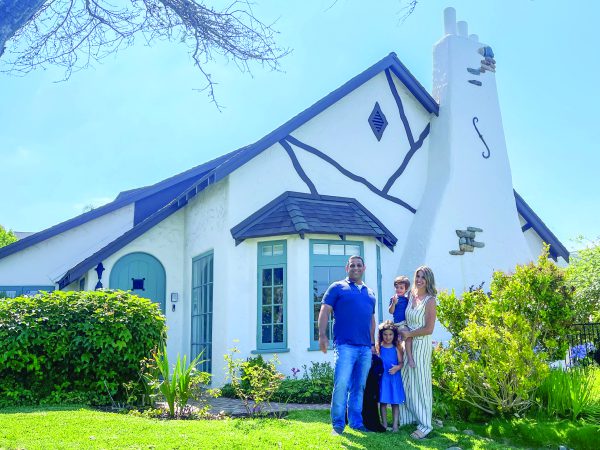A Taste of the English Cotswolds at Virginia Park Drive
By Hunter Fuentes and Jon Stordahl

Laguna Beach is filled with a remarkable variety of housing styles. On days when the bright coastal sun shines and each home is illuminated with just the right light, you’ll find the perfect recipe to truly appreciate the harmonious, yet eclectic architecture.
We are one of the only communities in Orange County that possesses this unique mixture of old and new, a variety of styles, yards and facades that provide a canvas for an owner’s eccentricities. This article celebrates our architectural diversity, for the homes that cover our town are more like a quilt than a blanket – each square contributes to the beauty surrounding us.
Laguna had a very humble origin. It attracted early settlers who erected simple structures on what must have felt like the edge of the world. By the second and third decades of the last century, wealthier people from neighboring counties began to build more substantial homes to serve as year-round residences and vacation destinations. The First World War profoundly impacted every aspect of society, including architecture. Many post-war architects embraced modern design styles that represented a complete rejection of the pre-war conventions. Other American architects drew inspiration from the styles they had seen in the European countryside during the war. One such style is Cotswold from the central-southwest region of England. These homes are usually characterized by steeply pitched roofs, multiple gables, prominent chimneys, generous use of exposed wooden timbers and whimsical details that create an almost enchanted atmosphere.
An outstanding example of the Cotswold style in Laguna can be found on Virginia Park Drive. The home is the work of Thomas J. Harper and was probably one of his very first projects. Harper was born in Orange County around 1905 and graduated from Orange Union High School. His mother was a member of the Northcross family, early settlers of Santa Ana and Orange. His grandparents arrived in Orange County from Tennessee in 1877, and the family became prominent farmers and ranchers. An article in the Long Beach Press-Telegram from April 29, 1941, noted that his parents settled in Laguna Beach in 1902. He began his university education at Berkeley before transferring to Otis and eventually USC. Harper traveled to Europe in the summer of 1929 while studying architecture at USC. Family wealth helped launch his career while still only in his 20s. According to the September 15, 1929 edition of the Santa Ana Register, Harper announced that he would “… start construction soon on a French chateau studio-residence on Virginia place ….” He described the home as “… the rural type of French architecture.” Well, which one is it, Cotswold or rural French? In truth, it’s a little of both. Architects like Harper were drawn to the general feel of European village life and not exactly purists in its interpretation.
Ali Beheshti and Christina Ithurburn purchased this home in June 2021 after falling in love with Laguna during an evening stroll down the Forest Avenue promenade late in the pandemic. Ali said that watching their two young children dance to the music of a live band gave them a sense that this was the community where they belonged. When the Virginia Park property came on the market, they scheduled a visit and knew within minutes they wanted to make this their home. The striking façade has a graceful, eye-catching chimney, a bay window, a diamond-shaped decorative vent, and an inviting rounded front door. Christina said that she fell in love with the beauty of the living room with its high exposed wood beam ceiling and artful fireplace. She calls it the coziest room in the home. Older homes are often filled with charming details like window seats, small built-ins, and hidden nooks. Christina loves the quaint narrow stair that leads to her daughter’s bedroom. This magical space has built-in cabinets, some with hidden doors, an irregularly angled ceiling, historic Laguna paneling, and diamond-paned casement windows. All of these characteristics contributed to the family’s decision to purchase the historic property. Their new home is on the city’s historic register and came with a Mills Act contract. They were pleasantly surprised when they learned of the property tax benefits associated with the Mills Act. With the contract comes guidelines designed to preserve the architectural integrity of the property. In truth, these are primarily the types of maintenance projects generally associated with home ownership. These old places sometimes need a little TLC and owners are willing to provide it. Ali and Christina have embraced these tasks and consider themselves fortunate to have such a house. They call themselves caretakers, the latest in a line reaching back almost a century. They are lucky, but so is their beautiful home to be in such good hands.
Hunter Fuentes is a local resident and realtor with Compass in Laguna Beach, specializing in historic architecture. Jon Stordahl has lived in Laguna for over 20 years and is a retired history teacher.




